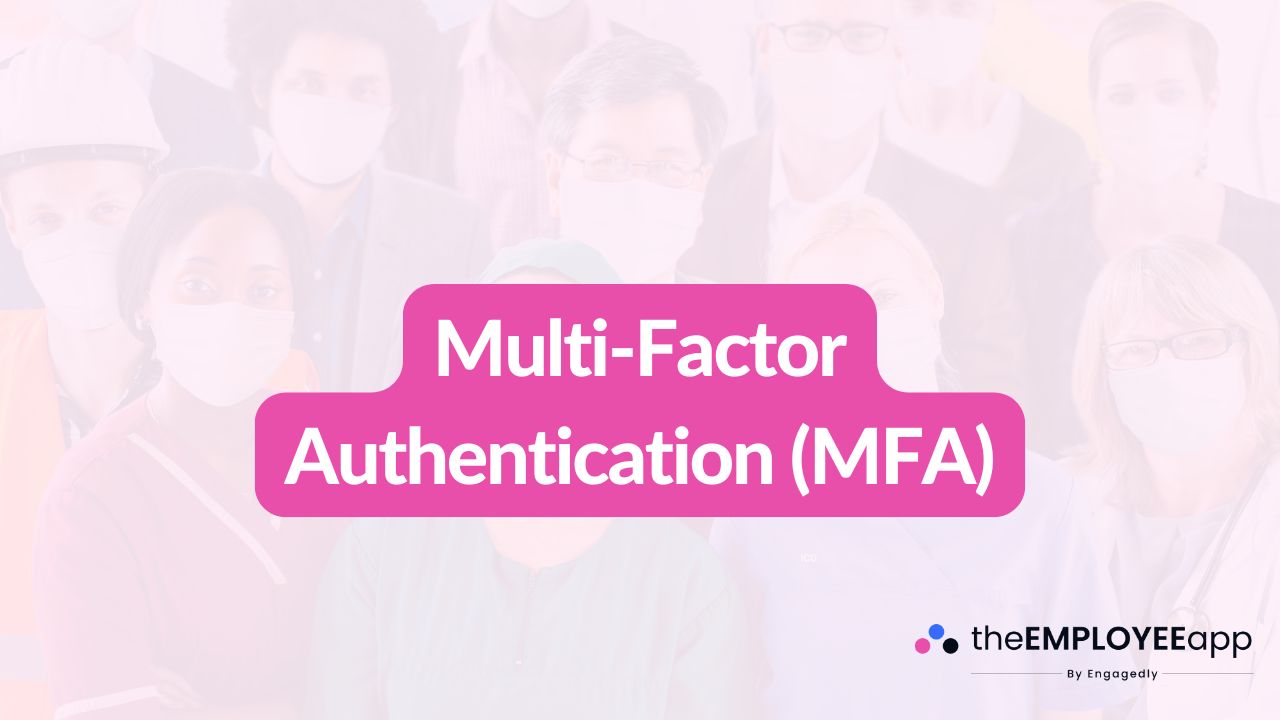
Multi-Factor Authentication (MFA) is a security process that requires users to provide two or more verification factors before gaining access to a system, application, or account. Instead of relying solely on a password, MFA strengthens authentication by layering multiple forms of identification, making it harder for unauthorized users to gain entry.
As cyber threats become more advanced, MFA has become a crucial element of modern security. For frontline organizations, where employees often access tools and data from mobile devices or shared workstations, MFA provides a balance between ease of access and protection against unauthorized entry.
At its core, Multi-Factor Authentication adds additional checkpoints beyond a traditional username and password. These checkpoints are based on categories of verification:
Something You Know – like a password or PIN.
Something You Have – like a smartphone, security token, or key card.
Something You Are – like a fingerprint, facial recognition, or voice ID.
By requiring a combination of these factors, MFA ensures that even if one layer is compromised, attackers cannot easily gain full access.
The MFA process typically begins when a user logs in with their standard credentials. Once those are verified, an additional factor is requested. This could be entering a code sent via text message, approving a push notification on an authentication app, or scanning a fingerprint.
For example, if a frontline worker logs into a company scheduling app, they may first enter their password and then receive a unique code on their mobile device. Only after providing both forms of verification will access be granted. This layered approach significantly reduces the chances of unauthorized access.
Stronger Security
Passwords alone are often weak, reused, or easily stolen. MFA dramatically reduces the risk of compromised credentials leading to data breaches.
Protection Against Phishing and Hacking
Even if a cybercriminal steals a password, they won’t be able to log in without the second or third verification factor.
Supports Remote and Frontline Workforces
MFA secures logins from any location or device, which is vital for frontline workers who often use personal or shared devices.
Regulatory Compliance
Many industries require MFA to meet compliance standards for data protection and privacy.
Increased Employee Confidence
When employees know their accounts and data are better protected, they can focus on work without worrying about security risks.
Organizations can choose from several MFA methods depending on their needs:
SMS Codes: A one-time password sent to a mobile device.
Authenticator Apps: Apps like Google Authenticator or Microsoft Authenticator generate temporary codes.
Push Notifications: A prompt sent to a user’s phone requiring approval with a single tap.
Biometric Verification: Fingerprints, facial recognition, or voice ID.
Hardware Tokens: Physical devices that generate secure codes.
For frontline teams, methods like push notifications and SMS codes are most common, as they work seamlessly on mobile devices.
Frontline employees often access systems on the go, whether it’s scheduling apps, communication tools, or training platforms. Many use personal smartphones or shared devices, which increases the risk of unauthorized access if credentials are stolen.
MFA helps reduce this risk by ensuring that even if someone learns a frontline worker’s password, they cannot access the system without the second factor. For industries like healthcare, retail, logistics, and hospitality, this added protection is essential to safeguard sensitive information and maintain trust.
While MFA greatly improves security, it can introduce some friction. Employees may find it inconvenient to wait for codes or carry hardware tokens. Organizations need to balance security with user experience by choosing MFA methods that are easy to adopt, especially for large frontline workforces.
For example, biometric verification or push notifications may be faster and less disruptive than SMS codes. Offering flexible MFA options allows employees to choose what works best for them while keeping systems secure.
As security threats evolve, MFA will continue to play a central role in protecting digital workplaces. Emerging technologies like adaptive authentication, which adjusts verification requirements based on user behavior and risk levels, are making MFA even smarter and more seamless.
For frontline organizations, MFA is no longer optional—it’s a necessity. By adding an extra layer of protection, companies can secure sensitive data, reduce breaches, and empower employees to safely access the tools they need to perform their jobs.
Multi-Factor Authentication (MFA) is one of the most effective ways to protect against unauthorized access in the modern workplace. By requiring multiple forms of verification, MFA makes it significantly harder for cybercriminals to compromise accounts.
For frontline workers who rely on mobile access to company systems, MFA provides both security and peace of mind. By investing in MFA, organizations not only protect their data but also build a safer, more connected, and more resilient workforce.